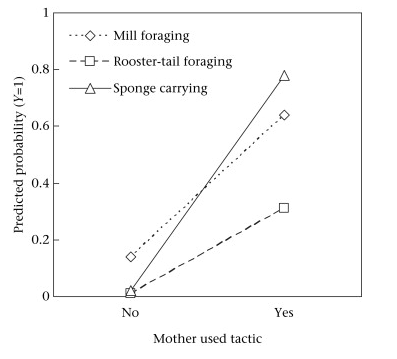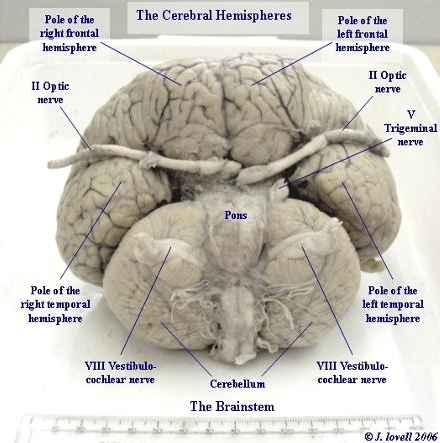Dolphin Tool Use
Biology 342 Fall 2010
Sarah Wesley & Morgan Movius
Mechanism
Underlying Biological Factors of Tool Use
“Culture is information or behavior acquired from conspecifics through some form of social learning.” -Boyd and Richardson (1985)[8]

Sponging is a result of social learning, and has no direct genetic mechanism.
It has been established that the “sponging” behavior exhibited by bottlenose dolphins in Shark’s Bay Australia is a result of cultural transmission (see Phylogeny) There is no evidence supporting an underlying genetic or physiological cause of this behavior. The fact that “sponging” dolphins dive for longer periods of time led to the hypothesis that unique mitochondrial proteins involved in cellular respiration could be necessary for “sponging”. However, this hypothesis has since been disproved [1]. This “sponging” behavior is distinct from other foraging behaviors of bottlenose dolphins in that it involves tool use, and therefore is considered more complex. Yet there is a plethora of foraging behaviors utilized by different members of this population, and there is reason to believe that all of these behaviors are culturally transmitted [4]. So the question then is not the mechanism of this foraging behavior, but rather the mechanism that precedes cultural transmission. This mechanism is social learning.
It is widely accepted that Bottlenose dolphins are capable of higher order social learning. Specifically, it has been demonstrated that bottlenose dolphins are capable of imitation and teaching [5]. Bottlenose dolphins are capable of both motor and vocal imitation [11, 12, 13]. Imitation of complex foraging behaviors is made possible by the long period of time that calves spend with their mothers [5]. The functional level tool use in “sponging” is exemplary of “program level imitation” [14]. This “program level imitation” entails that individuals are capable of learning specific structures within routines, such as “sponging”, rather than a simple fixed sequence of events. Skills learned through “program level imitation” are deeply complex, and therefore cannot be experimentally manipulated. Experimental manipulation likely would not increase knowledge regarding the mechanism of “sponging”, as there are not enough members of the “sponging” population to risk taking any individuals into captivity.
Figure 1. Chart of sponge-carrying and other foraging methods suggesting vertical cultural transmission. [4]

Social learning is possible due to complex neurophysiology.
The neural underpinnings of social learning in dolphins distinctly differ from those of humans. It has been shown that while all odontocetes (toothed whales) have similar cerebellar circuitry to humans, they have a reduced hippocampus [15, 16]. The cerebellum is implicated in complex integration of sensory information, which would be necessary for imitation. However, the hippocampus is widely accepted as the center of learning and memory in the human brain. More research is called for to determine neural source of social learning capability. This effort is limited by the size of the bottlenose dolphin population. Scientists are reluctant to capture dolphins for dissection. Images of brain structure can be achieved with MRI. This is difficult and costly, not to mention that fMRI data will not be representative of the brain of an animal behaving in its natural habitat.
Image from www.dolphinfacts.org